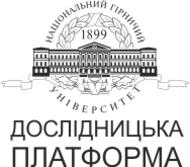№78-15
Dniprovske tailing dump: history, current hazards, control methods and environmental protection measures
L. Rudakov1
1Dnipro State Agrarian and Economic University, Dnipro, Ukraine
Coll.res.pap.nat.min.univ. 2024, 78:174–185
Full text (PDF)
https://doi.org/10.33271/crpnmu/78.174
ABSTRACT
Purpose. Based on the prerequisites for its creation, the history of the formation of protective dams and the filling of the “Dniprovske” tailing dump with radioactive waste, to study and critically rethink the potential negative impact that this man-made facility may cause to the environment and to propose ways to improve the level of environmental safety during its further remediation.
Research methodology. A comprehensive study of archival materials using the method of critical analysis of scientific and methodological literature and practical developments to study the structure and stability of structural parameters and dimensions of protective (enclosing) dams and overlying rocks. Comparative analysis of the qualitative composition of the Dnipro River surface water in different hydrological sections. The results were processed using computer software systems.
Research results. The structure and structural dimensions of protective dams and overlying rocks are investigated and presented. The possibility of accumulation, migration and unloading of atmospheric water contaminated with radioactive substances in the base and foundation of protective soil dams from the tailing pit with its subsequent overflow and contamination of the Dnipro River surface waters was revealed.
Originality. For the first time,a comparative analysis of the quality composition of surface waters of the Dnipro River in two channels, upstream and downstream of the radioactive waste tailing pond, was carried out,which made it possible to track the dynamics of changes in the sulfate content in the Dnipro water. It was found that in most cases, the Dnipro River surface water after passing along the tailing pond downstream has higher sulfate contamination. This may indicate the correctness of the theory of unloading groundwater that has passed through radioactive waste and entered the surface waters of the Dnipro River.
Practical implications. Chemical compounds and radionuclides accumulated in the tailing pond and their water migration pose a threat of contamination of not only groundwater but also surface water. Ways and means of solving the problem of radioactive waste management are proposed to prevent its spread and minimize the negative impact on the environment.
Keywords: Dniprovsketailing dump, radioactive waste, protective dam, surface water bodies, technogenic load, environmental safety.
References
1. Shmatkov, G., Korovin, V., Koshik, Yu., Ryaboshapka, S., & Shestak, Yu. (2001). Radioactive contamination of city territory due to work of uranium-processing plant and the ways of its solution. Loss Prevention and Safety Promotion in the Process Industries, 1215–1219. https://doi.org/10.1016/b978-044450699-3/50036-7
2. Shmatkov, G., Seminec, G., & Korovin, Yu. (2000). Complex Approach to the Problem of Radioactive Pollution of City Territory 14 Int. Congress of chemical and Process Engineering, Prague, Aug. 27-31 2000. Set of Summaries, 4, 289.
3. Korovin, V, Korovin, Yu, Laszkiewicz, G, Lee, L, Koshik, Yu, Shmatko, G, Semenets, G, & Merkulov, V. (2001). Problem of radioactive pollution as a result of Uranium ores processing
4. KARTY TRYVERSTOVKY z pryv’iazkoiu dlia GPS (n.d.). http://freemap.com.ua/karty-ukrainy/karty-trexverstovki-s-privyazkoj-dlya-gps
5. Zakliuchnyi zvit: «Predproiektni roboty dlia rozrobky TEO obgruntuvannia optymalnykh variantiv zdiisnennia zakhodiv na khvostoskhovyshchi «Dniprovske». (2012). DP «UkrNDPRIpromtekhnolohii». Zhovti Vody.
6. Prohrama pershocherhovykh robit z likvidatsii vidkrytykh radioaktyvnykh vykhodiv na poverkhni khvostoskhovyshch DP «PKhZ» dlia zapobihannia mihratsii RAV u richku Konoplianka (Khvostoskhovyshche «D»). (2000). DP «UkrNDPVIpromtekhnolohii».
7. Prohrama vykhodu z ekolohichnoi kryzy m. Dniprodzerzhynska na 2000–2005 roky. (2000). Instytut problem pryrodokorystuvannia ta ekolohii NAN Ukrainy.
8. Nevidkladni roboty na zakhysnykh sporudakh skhovyshch radioaktyvnykh vidkhodiv pererobky uranovykh rud Derzhavnoho pidpryiemstva «Prydniprovskyi khimichnyi zavod». Khvostoskhovyshche «Dniprovske». Tekhnichni rishennia shchodo stvorennia merezhi nahliadovykh sverdlovyn. (2000). DP «UkrNDPVIpromtekhnolohii».
9. Robochyi proekt «Nevidkladni roboty zi zmitsnennia hrebli na khvostoskhovyshchi radioaktyvnykh vidkhodiv «Dniprovske» Prydniprovskoho khimichnoho zavodu u m. Dniprodzerzhynsku». Tom 1 – Tekhnolohichni rishennia. (2001). «UkrNDPVIpromtekhnolohii».
11. Hapich, H.V., Pikarenia, D.S., Rudakov, L.M., Maksymova, N.M., & Makarova, T.K. (2019), Otsinka ryzyku avarii ta rozrakhunok protsesu ruinuvannia gruntovoi hrebli khvostoskhovyshcha, Komunalne hospodarstvo mist (Seriia «Tekhnichni nauky ta arkhitektura»), 3(156), 99–104. https://doi.org/10.33042/2522-1809-2020-3-156-99-104
12. Voitsekhovitch, O., Soroka, Y., & Lavrova, T. (2006). Uranium mining and ore processing in Ukraine – radioecological effects on the Dnipro River Water Ecosystem and human health. Radionuclides in the Environment – Int. Conf. On Isotopes in Env. Studies, 206–214. https://doi.org/10.1016/s1569-4860(05)08014-9
13. Derzhavne ahentstvo vodnykh resursiv Ukrainy. Derzhvodahenstvo. Ofitsiinyi vebsait. (n.d.). https://www.davr.gov.ua/.
14. MONITORYNH TA EKOLOHIChNA OTsINKA VODNYKh RESURSIV UKRAINY (n.d.). Derzhavne ahentstvo vodnykh resursiv Ukrainyhttp://monitoring.davr.gov.ua/EcoWaterMon/GDKMap/Index
15. Rudakov, L., Hapich, H., Orlinska, O., Pikarenia, D., Kovalenko, V., Chushkina, I., & Zaporozhchenko, V. (2020). Problems of technical exploitation and ecological safety of hydrotechnical facilities of irrigation systems. Journal of Geology, Geography and Geoecology, 29(4), 776–788. https://doi.org/https://doi.org/10.15421/112070
16. Romashchenko, M.I., Rokochynskyi, A.M., Halik, O.I., & Savchuk, H.I. (2008). Suchasni zminy klimatu ta yikh proiavy vid hlobalnoho do rehionalnoho rivniv, 65–79.
17. Vyshnevskyi, V.I. (2001). Zminy klimatu i richkovoho stoku na terytorii Ukrainy i Bilorusi.Naukovi pratsi UkrNDHMI, 249, 89–105.
19. Tymoshchuk, V., Rudakov, L., Pikarenia, D., Orlinska, O., & Hapich, H. (2023). Analyzing stability of protective structures as the elements of geotechnical tailing pond safety. Mining of Mineral Deposits, 17(4), 116–122. https://doi.org/10.33271/mining17.04.116
20. Rudakov, D., Pikarenia, D., Orlinska, O., Rudakov, L., Hapich, H. (2023). A predictive assessment of the uranium ore tailings impact on surface water contamination: Case study of the city of Kamianske, Ukraine. Journal of Environmental Radioactivity, 268–269(2023), 107246. https://doi.org/10.1016/j.jenvrad.2023.107246
21. Tymoshchuk, V., Tishkov, V., & Soroka, Y. (2018). Hydro and geomechanical stability assessment of the Bund wall bottom slope of the Dniprovsk tailing dump. Mining of Mineral Deposits, 12(1), 39–47. https://doi.org/10.15407/mining12.01.039




